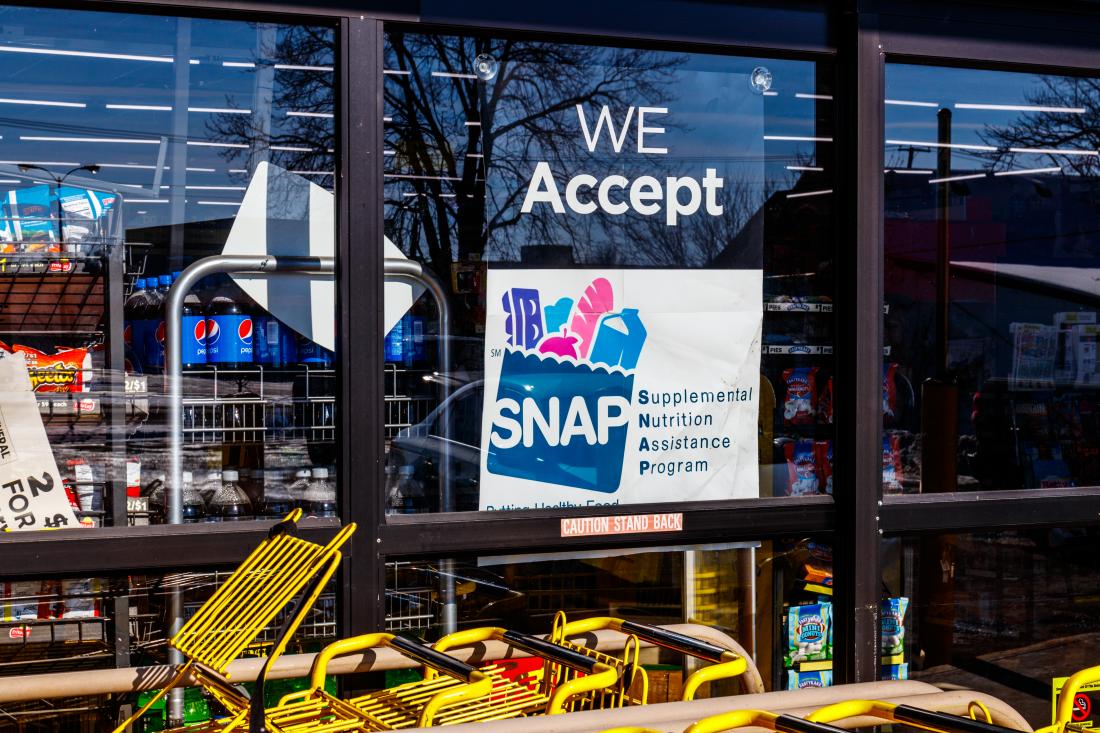The impact of text message nudges on churn in the Supplemental Nutrition Assistance Program in the United States
- Enrollment and attendance
- Information
- Nudges and reminders
Many households that receive Supplemental Nutritional Assistance Program (SNAP) benefits experience “churn,” a lapse in benefits due to not completing the required recertification activities. Researchers are conducting a randomized evaluation to test the impact of text message reminders of key recertification processes and deadlines as well as access to paperwork assistance on enrollment in SNAP.
Policy issue
In fiscal year 2019, 38 million Americans received Supplemental Nutritional Assistance Program (SNAP) benefits. SNAP is a public benefit program that provides low-income individuals and families across the United States with financial assistance for food purchases. Under federal criteria, individuals and households must meet certain income limits (states have flexibility to adjust these limits) to be eligible for these benefits and recertify their eligibility periodically. Those found eligible for the program receive an electronic benefits transfer (EBT) card that is loaded once a month and can be used to purchase food at grocery stores and participating farmers markets.
Despite these benefits, many eligible individuals and households do not complete the required renewal processes on time, temporarily dropping out of the program, a phenomenon known as “churn”. The US Department of Agriculture defines churn as exiting and reentering the program within a period of four months. During this time, individuals lose access to SNAP provided funds to purchase groceries. This can result in food insecurity or broader financial insecurity due to using funds for rent, utilities, and other necessities to cover the cost of food. Administering agencies, too, face a cost to the lapse of benefits, as the re-enrollment process is more resource intensive than a simple renewal. The administrative cost increase of a single reapplication ranges from around $30 to $130, which in total has added between $0.1–$6.0 million to states’ annual certification costs. Participant churn is a challenge for many transitional benefit programs supporting low-income people, including the Temporary Assistance for Needy Families and Medicaid programs.
Context of the evaluation
SNAP clients live in every Massachusetts city and town. In 2017 over 20 percent of new SNAP applicants in Massachusetts “churned,” reentering the program after a short-term benefits lapse. Churn is more likely to occur in households where heads of household are non-Hispanic Black, nonelderly and nondisabled with children, and younger than 45 years old. For those households, interviews conducted by the Department of Transitional Assistance (DTA) with churned clients showed that life struggles led many clients not to complete recertification.
For clients that receive certification for a year, the client must complete an interim report at six months and a recertification at twelve months in order to retain benefits. The DTA mails the interim report form to the clients 45 days prior to the deadline. The interim report paperwork can be returned by mail, by fax, online or by completing an interactive process on DTAConnect.com. If DTA has not received the report by 19 days before the deadline, the agency typically notifies the participant by mail and automated phone call that their case will be closed if they do not submit the form.
SNAP churn has been linked to clients not receiving letters due to moving and address changes. Ninety-five percent of Americans now own cell phones. In an effort to reach households, even when there has been a change of address, DTA is launching a new text message program to notify participants of upcoming deadlines and links to access recertification paperwork.

Details of the intervention
SNAP clients live in every Massachusetts city and town. In 2017 over 20 percent of new SNAP applicants in Massachusetts “churned,” reentering the program after a short-term benefits lapse. Churn is more likely to occur in households where heads of household are non-Hispanic Black, nonelderly and nondisabled with children, and younger than 45 years old. For those households, interviews conducted by the Department of Transitional Assistance (DTA) with churned clients showed that life struggles led many clients not to complete recertification.
For clients that receive certification for a year, the client must complete an interim report at six months and a recertification at twelve months in order to retain benefits. The DTA mails the interim report form to the clients 45 days prior to the deadline. The interim report paperwork can be returned by mail, by fax, online or by completing an interactive process on DTAConnect.com. If DTA has not received the report by 19 days before the deadline, the agency typically notifies the participant by mail and automated phone call that their case will be closed if they do not submit the form.
SNAP churn has been linked to clients not receiving letters due to moving and address changes. Ninety-five percent of Americans now own cell phones. In an effort to reach households, even when there has been a change of address, DTA is launching a new text message program to notify participants of upcoming deadlines and links to access recertification paperwork.
Results and policy lessons
Research ongoing; results forthcoming.
